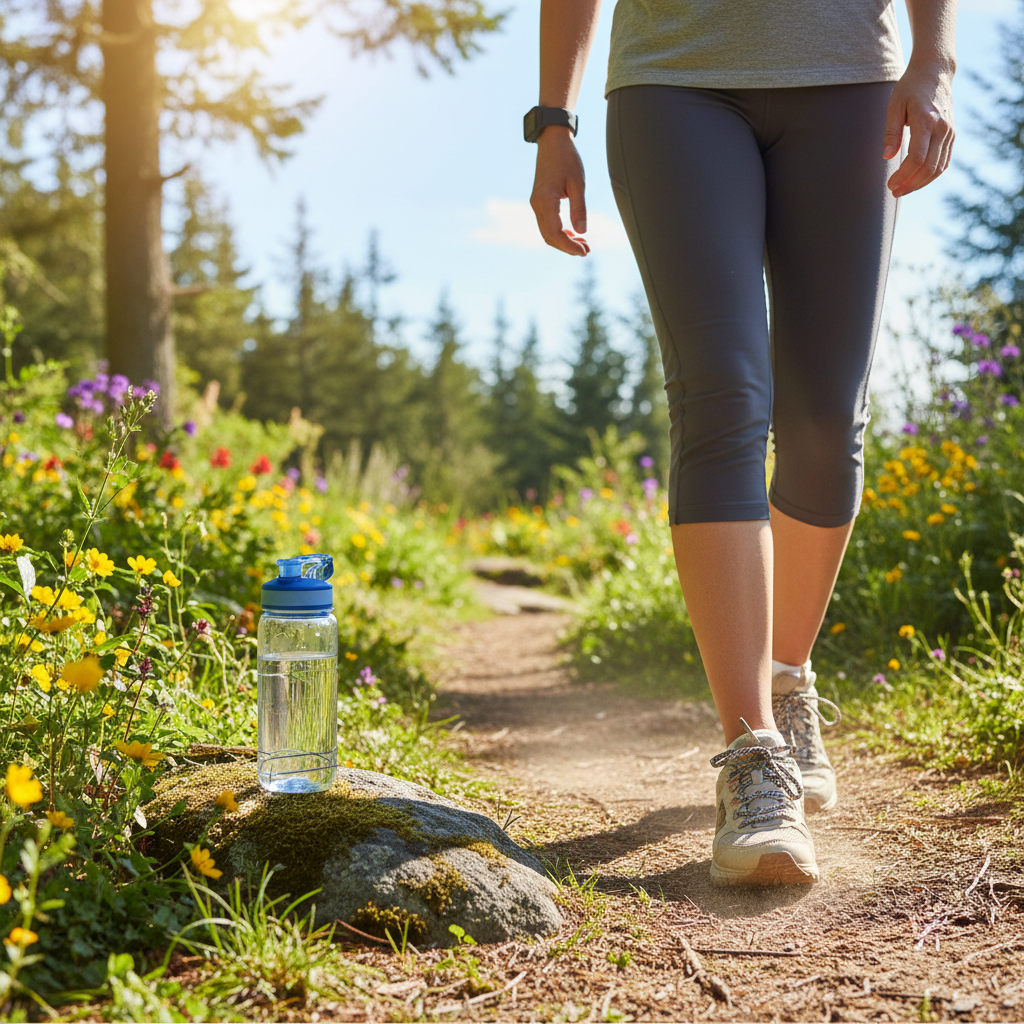Walking Routine for Better Sleep and Wellness

Why Walking Enhances Sleep and Wellness
A walking routine for better sleep might sound simple, but its effects are powerful. Imagine exchanging restless nights scrolling endlessly with a refreshing walk in fresh air. Science confirms what many of us have experienced firsthand: taking daily walks—especially in natural daylight—helps regulate your body’s internal clock, or circadian rhythm, floods your brain with mood-boosting endorphins, and reduces stress hormones that interfere with restful sleep.
Walking is essentially a low-impact, accessible exercise for everyone, whether you’re a fitness enthusiast or just starting out. It’s a proven method to improve sleep quality, enhance mood, increase energy levels, and support your overall wellness journey. No fancy gear needed—just steps toward better nights and days.
Takeaway: Walking isn’t just an old-fashioned pastime; it’s a reliable strategy for better sleep and stress relief.

Step-by-Step Walking Routine for Better Sleep
Ready to harness the benefits of a walking routine for better sleep? Here’s a simple guide to get you started and stay consistent.
1. Choosing the Best Time for Your Walk
- Morning walks: Help reset your body clock for increased daytime energy and improved nighttime rest.
- Evening walks: Calm your mind and reduce stress several hours before bedtime, setting the stage for restorative sleep.
Pro tip: Select the time that suits your lifestyle—regularity is more important than the hour on the clock.
2. Setting Duration and Intensity
- Start with 10–20 minutes per day and gradually increase to a comfortable 30-minute stroll.
- Maintain a moderate pace that allows you to hold a conversation without gasping for air.
3. Picking a Comfortable Route
- Parks, sidewalks, or even treadmills — whatever works for you.
- Walking in nature offers additional benefits, such as enhanced relaxation from greenery and bird sounds.
4. Focusing on Posture and Breathing
- Keep your head up, shoulders relaxed, and arms swinging naturally.
- Breathe deeply and steadily to signal your nervous system to relax and prepare for rest.
5. Tracking Your Progress
- Use a smartphone app or smartwatch to monitor your steps, aiming for about 6,000–8,000 daily steps [source].
- Celebrating small milestones keeps motivation high and reinforces the habit.
Takeaway: Incremental, consistent walking sessions accumulate into significant improvements in your sleep and wellbeing.

Benefits of a Walking Routine for Sleep and Wellness
Integrating a daily walking routine for better sleep unlocks numerous benefits beyond just dozing easier:
- Improved sleep quality: Fall asleep faster and enjoy deeper, uninterrupted dreams [source].
- Stress reduction: Walking lowers cortisol levels, helping your mind unwind.
- Mood enhancement: Release of endorphins makes anxiety retreat and happiness flourish.
- Physical health: Supports heart health, manages weight, and protects joint function.
- Immune support: Regular moderate activity keeps your body’s defenses vigilant.
Takeaway: Walking acts as a holistic boost for your mind and body, promoting restorative sleep and vibrant wellness.
Frequently Asked Questions (FAQs)
Can I walk right before bed?
Yes, but keep it gentle. A relaxed evening walk a few hours before bedtime helps your body wind down, while vigorous exercise close to sleep time can be stimulating.
What if I’m short on time?
Even 10 minutes counts. Incorporate short walks during the day whenever possible—consider walking breaks during work or leisure time.
Can walking help with insomnia?
Walking reduces stress and helps regulate sleep cycles, making it beneficial for mild to moderate insomnia. For severe cases, consult a healthcare professional.
Should I walk indoors or outdoors?
Both are effective; however, outdoor walking offers added benefits like exposure to natural light and scenic environments, enhancing mood and vitamin D levels. For more info, see Mayo Clinic’s guide to walking.

Personal Tips for Success
- Add mindfulness or gentle stretches during your walks to deepen relaxation.
- Stay hydrated and wear comfortable shoes to keep each stroll enjoyable.
- Make it social: turn walks into quality conversation time with friends or family.
Takeaway: Transform your walking routine into an enjoyable mini-adventure rather than a chore.
Resources and Further Reading


